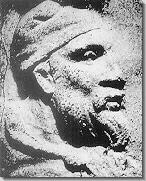| Group | Single |
| Geography | This tongue was obviously used by Thracian tribes such as Daci, Geti and others on the territory of modern Romania, Moldavia, Ukraine and Slovakia. |
| History | Dacians were not influenced by Greeks in the 6th - 1st centuries BC, threfore remazined uncivilized. In the 2nd century AD Roman emperor Trajan invaded Dacia several times, and finally conquered the country and defeated its legendary king Decebal. Soon afterwards Roman colonists assimilated the language. |
| Phonetics | Phonetics reflects that Dacian was probably more progressive than Thracian. It did not preserve most of diphthongs, which existed in Proto-Indo-European and are observed in Thracian. The long [e] sound turned into [] and then into [a], which is absolutely strange for Thracian. As for consonants, Dacian preserved voiced and unvoiced stops (b, d, g, p, t, k) which became aspirated in Thracian. |
| Morphology | The book by a Bulgarian linguist Ivan Duridanov gives a good piece of information about Dacian placenames: towns, rivers, settlements. The majority of town names in the area inhabited by Dacian tribes carries the final element -dava (-deva, -daua, -daba), while Thracian names, lying to the south, mostly end in -para (-phara, -pera, -parn, etc.) ‘a village’, -bria ‘a town’ and -diza (-disza, -dizos) ‘a fortress'. |
| Writing | No writing |
| Close Contacts | Thracian was the closest relative; contacts existed with Illyrian, Baltic and Slavic languages, later with Germanic and Latin. |
| Picture |  |
| More info |